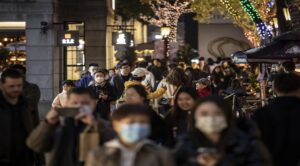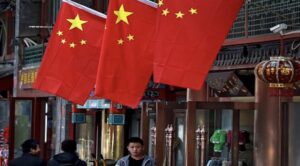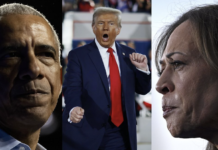China’s economy is slipping into deflation, as the recovery from the COVID-19 epidemic falters.
Comparing China’s current economic situation to Japan’s “lost decade” is increasing the anxiety of China’s business community. In the late 1990s and early 2000s, Japan experienced a period where interest rates were at ultra-low levels and prices remained static. The Japanese economy hasn’t recovered fully, and with its major trading partner now entering a deflationary phase, it may slip backward.
China’s problems are a result of the way the country dealt with the pandemic. The economic damage caused by the massive shutdowns of major cities and provinces due to a few positive results lasted much longer in China than it did in the West. When civil unrest threatened to topple the government, they quickly removed restrictions on travel and almost everything else.

After restrictions were lifted two weeks before Christmas, more than 80% of the Chinese population was infected by COVID-19. China stopped tracking infections and deaths in the country months ago. However, it is believed that up to a million people died during the worst part of the pandemic.
The Chinese government has never provided any economic stimulus for the restart of the economy. Small stimulus targeted at vital sectors could have helped the economy get off the ground. Without it, the economy would have sputtered.
Gary Ng is Asia Pacific Senior Economist at Natixis. He said: “For China, it’s becoming more apparent that the manufacturing and service sectors are diverging, which means the economy will continue to grow at two different speeds for the remainder of 2023. This is especially true as the real estate problem reemerges.” It also shows that China’s economic recovery is slower than expected and not strong enough for it to offset weaker global demand. This will lead to a rise in commodity prices.

Reuters:
China’s recovery from the pandemic has slowed down after a rapid start in the first three months. Demand at home and abroad decreased and policies designed to boost the economy have failed to stimulate activity.
According to the National Bureau of Statistics, the Consumer Price Index (CPI), which measures consumer prices, fell 0.3% on an annual basis in July. This is a significant difference from the 0.4% median estimate in a Reuters survey. This was the first drop since February 2021.
The producer price index has declined for the 10th month in a row, falling 4.4% faster than forecasted.
In July, both exports and imported goods in China slowed. The huge mortgage market in China also brought more bad news. Consumer spending has slowed down after the initial surge of spending following restrictions being eased.

Fitch Ratings said that “uncertainties still remain” in China’s plan for reviving consumer spending. The plan is largely dependent on a recovery in consumer confidence, and the implementation of local government policies, but details about the measures are vague.
After the powerful Politburo Meeting last month, investors have been waiting anxiously for policymakers to inject stimuli. The stock market has mostly been underwhelmed by the lack of action.
Tommy Wu, senior economics at Commerzbank said that “markets and businesses” should be prepared for the “new normal”, in which the Chinese Government will not provide large stimulus measures.
Wu said that instead of implementing targeted stimulus, most policy measures would focus on the supply side.
It is always concerning to see any difficulties in an economy as large as China, especially when Beijing’s main trading partners Japan and the U.S. also have concerns. China’s deflation is certainly worth watching and could become a concern later in the year.




